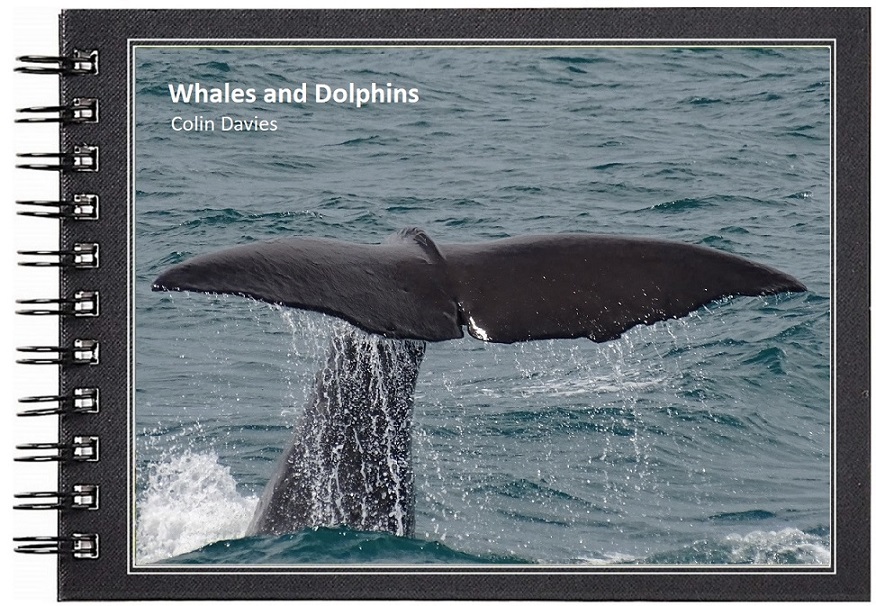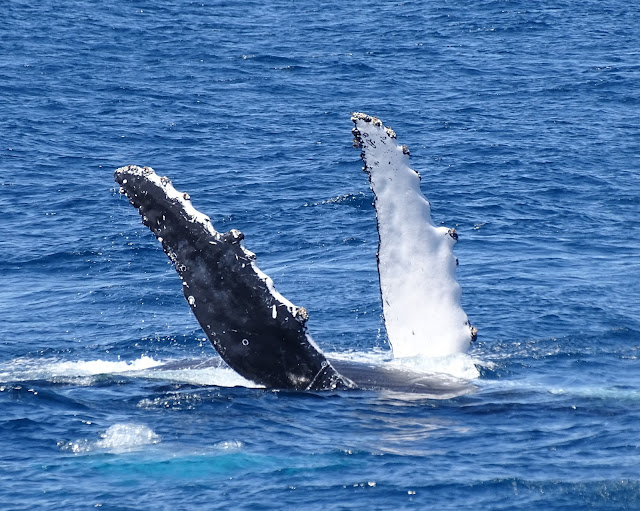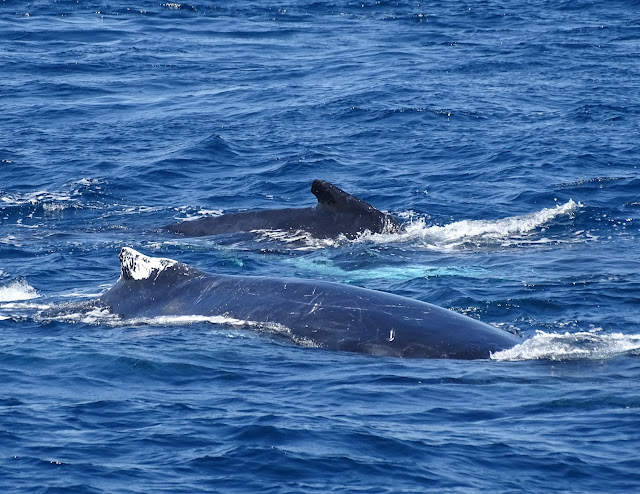We'd only been out about 10 minutes, less than half a mile offshore I would say when one of the crew standing next to me said "I'm sure that's a blue over there". The skipper immediately turned the boat and headed over. This is the same guy who just a few minutes earlier had told me that they had seen a blue whale last week but it had only surfaced once never to be seen again, so I was a little nervous to say the least. The chance of seeing a blue whale, the largest animal ever to exist was the dream of a lifetime, but would it reappear or would this prove to be a shatteringly close but ultimately failed dream? How many more opportunities would I get?
Fortunately the animal did reappear and broke the surface several times giving us some great views, though not quite the vaudeville performance which is usually put on by humpbacks! Perhaps not quite up there with the Orca I saw off mainland Caithness last year which were the highlight (so far) of my career as an amateur naturalist, but not far short and still a fantastic experience.
I never thought I'd get a photo of a blue whale!
Blue whale
Blue whale
And here's what I meant by a Vaudeville performance.... not content with tail slaps and pectoral fin slaps and even breaching, this humpback whale decided that it was a good idea to do backstroke right past the boat. Almost like it was saying "Yeah that blue guy is big, but I bet he can't do this".
I saw lots of humpbacks today, probably about 10 from the boat trip but later I headed up to Cape Naturaliste and saw at least another 30 from Sugar Loaf watch point and then from the main watch point near the lighthouse. There were pods scattered all over the ocean, in reality there were probably a lot more than 30.

Humpback whale.
The third species of whale which we saw today was southern right whale, so named because in the barbaric days of old when they used to hunt whales to nearly extinction in Australia, this was the "right whale" to hunt. The photo shows a mother and calf.
Southern right whale. Note the pectoral fin shape (right) which is completely different to that of the humpback whale above.

The tail shape is also different to the humpacks tail.
The white patches on the head are patches of rough calcified skin. The whiteness is due to large colonies of white lice that lives on them. Apparently these lice are unique to southern right whales and live nowhere else.
The mothers bring their calves close into shore to avoid predators such as killer whales which are also in the area.


















No comments:
Post a Comment